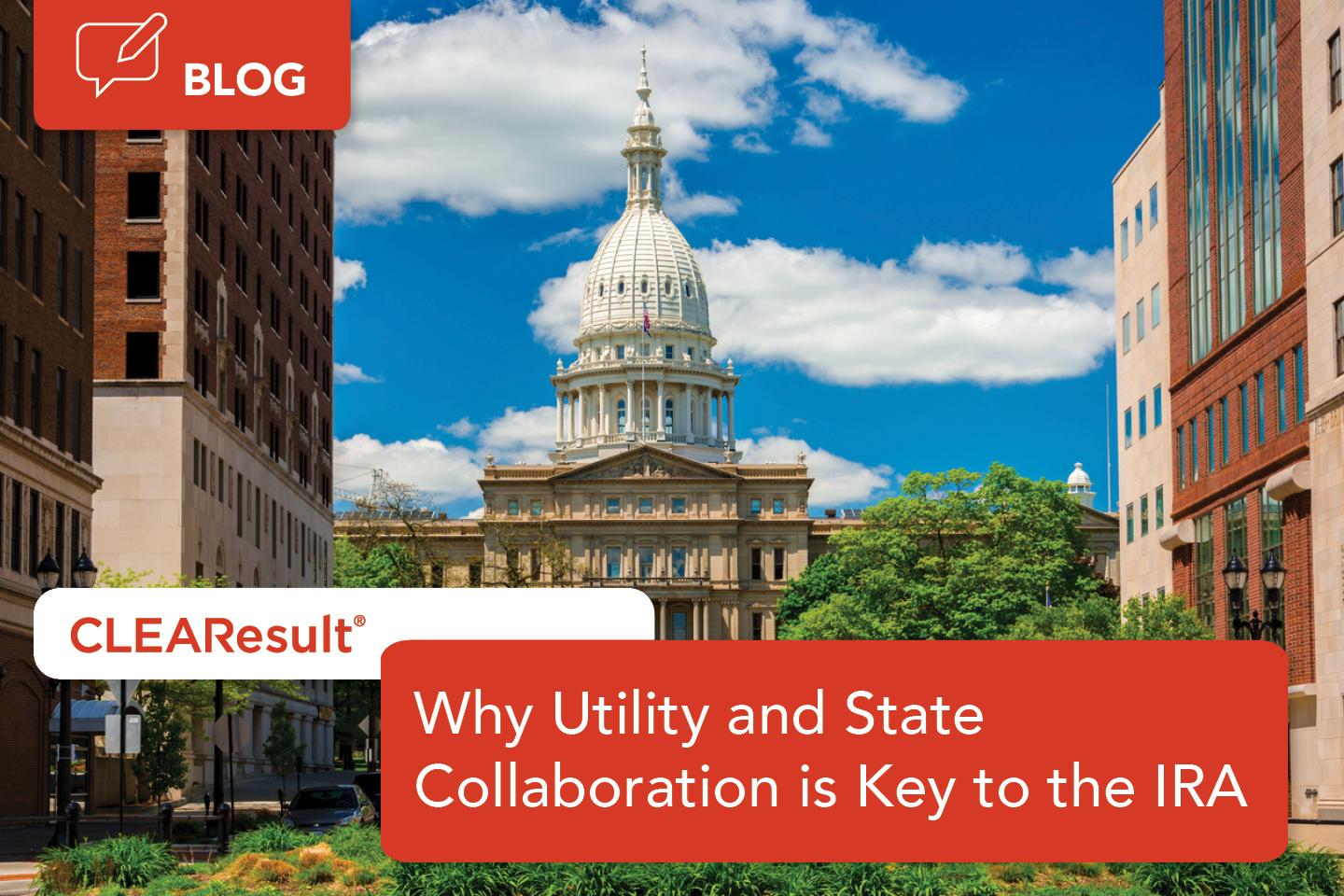Why utility and state collaboration is key to making the Inflation Reduction Act work

A new era of energy efficiency is on the horizon—the Inflation Reduction Act (IRA) will provide millions of dollars for state-run energy efficiency programs starting as soon as this year. This level and type of funding will require tight collaboration between utility-led energy efficiency programs and state governments to maximize energy savings. Our conversations with utility clients across the U.S. who administer similar programs revealed that while they’re excited to see additional federal funding, they naturally have questions about how to coexist with state-run IRA programs. Let’s look at some of the ways states and utilities can work together to address challenges and amplify savings for everyone.
Market confusion and competition
It could create confusion for customers if states and utilities have similar offers in market, leading people to participate in only one program or neither. Rebates of different values for the same upgrade (e.g., a $400 vs. $670 rebate for the same heat pump) may have customers questioning the authenticity of these incentives, or they may find it difficult to navigate their choices. This lack of clear alignment on rebate offers could lead to a disjointed customer experience that alienates, instead of invites, new participants. Additionally, if people gravitate toward only the state-run programs, utilities may struggle to hit their annual savings goals which could harm those programs’ long-term viability. States and utilities working together to ensure the health of both program types will benefit everyone in the long run.
Attribution
Customers may not differentiate between state and utility-led programs. Over the years, many utilities have depended on energy efficiency programs to help them build trust, which is especially important in historically under resourced communities that benefit the most from energy efficiency upgrades. If customers start receiving similar or better benefits from state-led programs, for example, the perception of utility-run programs could change. Should the state program deliver a different level of service or quality assurance than people are used to with utilities, it could turn customers off to programs, altogether.
Free ridership
The IRA opens the door to many rebates and credits that are unrestricted by income, raising the topic of “free riders.” “Free ridership” is the term used when customers who have the means to complete energy efficiency improvements without the assistance of incentives are allowed to receive those incentives anyway. With multiple paths to incentives, how will free ridership be evaluated? Additionally, will state-sponsored marketing efforts accidentally drive customers to utility programs, and vice-versa? It’s still early days, but one thing is for sure—there will be multiple forces transforming the market and how we parse savings attribution remains to be seen.
Recommendations for navigating the IRA together:
Given these challenges, utility and state-run programs have a common interest in working together to amplify energy savings. Here are our top three recommendations on how to achieve success:
- Put the customer first. The best results are achieved when the community being served is the focus. The roles that utilities play in each state are different, so it’s important to have open conversations with customers and state energy offices to create a process that works for all. Share goals, plans, and expectations, then work together to create a mutually beneficial program design that focuses on savings and driving customer engagement—a key indicator of success.
- Leverage what already works. It’s common to want to start from the ground up when taking on new initiatives, but leaning on currently successful program models or resources can speed up timelines for everyone. If there are existing trade ally networks, activate them to take on more work instead of starting from scratch. The same applies for rebates. If there are already systems and vendors in place to process rebates, then continue to use them. Navigating the uncharted IRA waters will be challenging, so relying on your proven program models will help speed up the process.
- Create a common brand. Keeping everything under one roof will amplify all available energy savings. For example, Massachusetts leverages Mass Save®, an award-winning common brand that has helped the state consistently rank in the top three most energy efficient states in the country. This strategy has proven successful at cutting down confusion while boosting community participation and streamlining processes all at once.
Final thoughts
We believe the IRA will create exciting, new opportunities for utilities and states to collaborate. With change comes challenge, but the benefit of a cleaner, greener future is worth the effort. As utilities and governments redefine how they work together, it’s the job of energy efficiency implementers, like CLEAResult, to remain laser-focused on amplifying energy savings at every level.
To figure out how your state or utility program can start building a program that works for everyone, visit our IRA page or reach out to us directly.